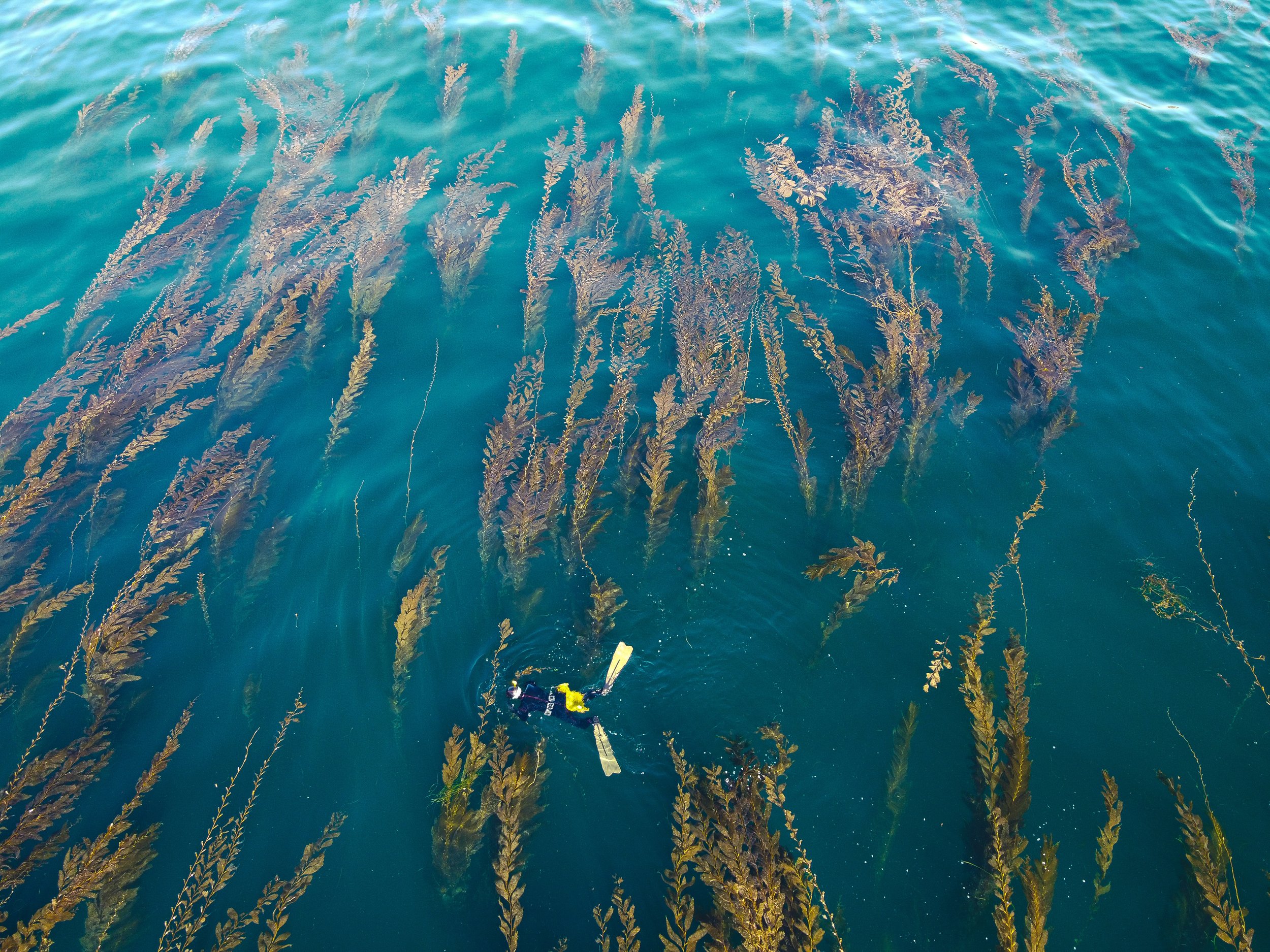
Oriana creates works using alternative photographic processes, primarily utilizing the cyanotype and lumen printing processes. These processes use light-sensitive chemistry, UV light from the sun, and materials collected from the ocean create one of a kind, life-size images.
Cyanotype, or sun printing, is a photographic process that dates back to 1842. A light-sensitive emulsion of two iron salts is brushed onto paper, and an object is laid over the paper, creating a shadow. The object and paper are exposed to direct sunlight and developed in water to produce an image - the object’s shadow.
Oriana began experimenting with cyanotype nearly a decade after she learned to print black and white film images in the darkroom. Liberated from the confines of darkness and the limits of film negatives and enlargers, the cyanotype process allowed her to record her subject, the giant kelp forests and associated seaweeds, directly, at life-size, and outdoors. Each print is a record of the species at that moment in space and time, a fixed data point in the face of shifting climate.
Freediving
Oriana’s process begins in the ocean. She free dives on a single breath of air, deep into the kelp forests off California’s coastline, where she collects her subjects, specimens of kelp, algae, or marine debris.
The materials she collects are different with each dive, and dependent on location, season, or oceanic conditions.
Preparation
Oriana’s cyanotype prints are created using paper or fabric that she hand coats with cyanotype chemistry, a combination of two non-toxic iron salts sensitive to ultraviolet light.
This process is one of the earliest forms of photography, and was used by British botanist, Anna Atkins, to create the world’s first photographic book in 1843.
Sun + Water
The subject is laid directly over the paper or fabric, and exposed to sunlight to create a unique, life-size image. Prints made in direct contact of a subject to a light-sensitive substrate are known as photograms.
The print is developed in fresh or salt water, revealing the image created by the shadow of the subject over the paper and the reaction of the cyanotype chemistry with the sun and water.
Image Credits from Top: Lindsay Bauman, Lucianna McIntosh, Heidi Zumbrun.
Watch this Voited Artist Studio video to learn more about Oriana’s process and inspiration:






